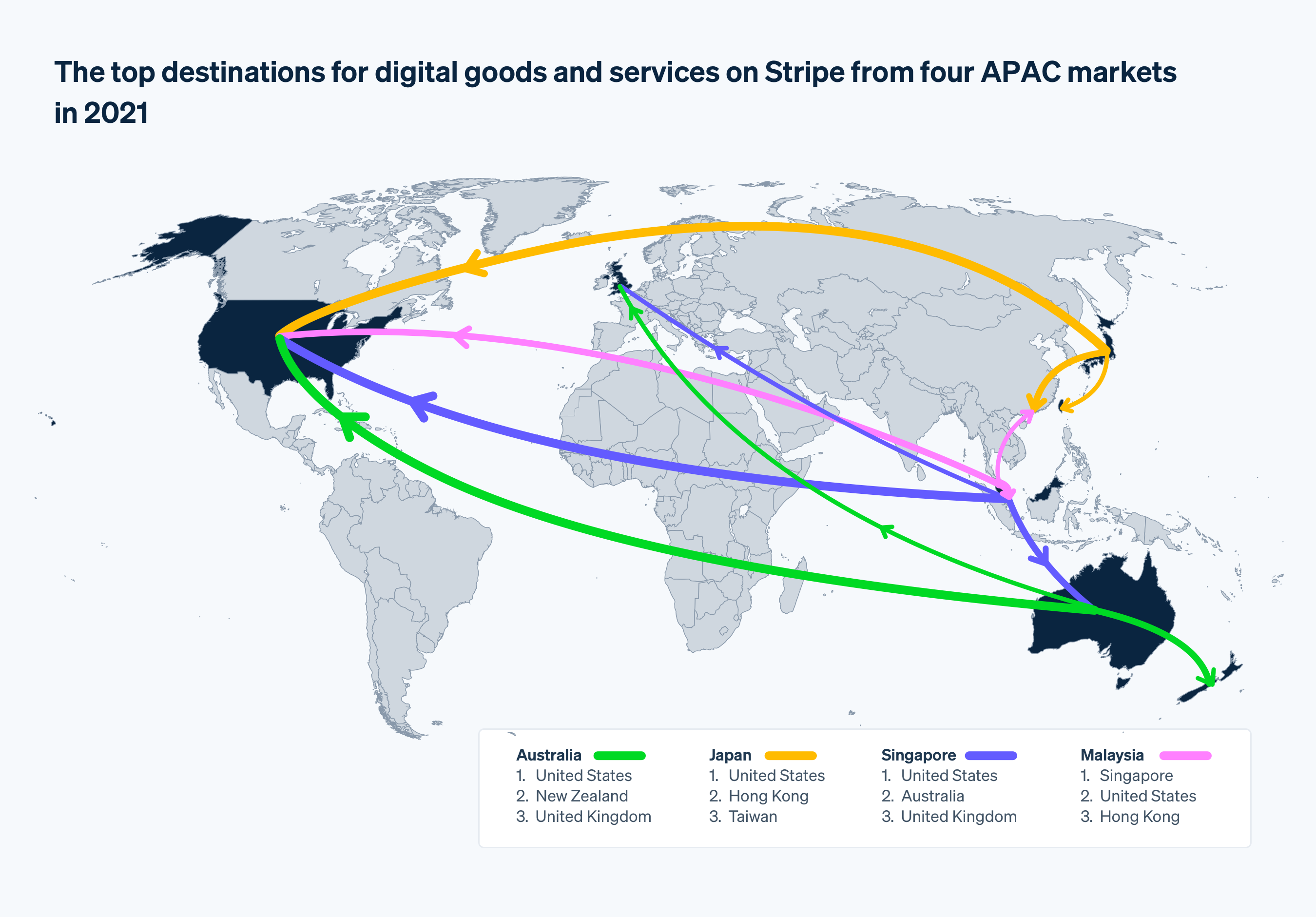Stripe report shows how digital exports are remaking trade routes in Asia-Pacific
- Businesses in Australia, Japan, Malaysia, and Singapore are finding newer, more distant export markets for their products.
- Non-digital-native businesses on Stripe are expanding into international markets faster than digital-natives.
- Digital exports are driving growth for many industries, including traditionally offline businesses, during an uncertain economic period.
SINGAPORE—Stripe, a financial infrastructure platform for businesses, today released a report based on three years of proprietary data that reveals the emergence of new digital export flows from four Asia-Pacific countries: Australia, Japan, Malaysia, and Singapore.
The report—based on transaction data on Stripe from 2019–2022—describes how digital export flows are being determined by global demand and market fit rather than traditional supply-chain routes. Platforms like Stripe are transforming the economics of doing business across borders while creating a foundation for growth during an economic slowdown.
“Businesses can tap into new international markets without the need for large capital expenditures. Even as the macroeconomic situation worsens, this provides an opportunity for businesses of all sizes to find new customers in less impacted regions,” said Paul Harapin, head of Asia-Pacific and Japan at Stripe.
Digital exports are shifting global trade flows

Digital export markets don’t depend on geographic proximity. In 2021, the United States was the top international market for products and services from Australian, Japanese, and Singaporean businesses on Stripe. The United Kingdom—more than 6,000 miles (9,600 kilometers) away—was the fastest-growing digital export market for Malaysian businesses.
International opportunities are waiting for businesses that have the right infrastructure to sell on a global scale.
The profile of businesses selling internationally is changing
Between 2020 and 2021, the number of non-digital-native businesses from Japan, Malaysia, and Singapore selling internationally on Stripe grew faster than the number of digital-native businesses.

Traditionally offline businesses are making technology investments that create a foundation for long-term growth. They include Nikkei Inc., one of Japan’s largest media networks. Founded in 1876, the company chose Stripe to simplify the registration experience on its digital service platform, Nikkei ID—particularly for users outside of Japan—through adoption of Apple Pay.

Digital exports are catalyzing growth for diverse industries
The total number of businesses selling internationally on Stripe has grown steadily between 2020 and 2021. Some industries have been especially effective at capitalizing on the trend. The top five industries selling internationally on Stripe in 2021 include products and services that are easier to buy and sell on the internet, like software, as well as fast-moving consumer product categories like clothing and accessories.
Bikes Online is one APAC merchant that has taken advantage of international opportunities. The Australian direct-to-consumer online bike retailer used Stripe Atlas to quickly open bank accounts and incorporate in the US. The company has seen a 10x increase in business since its US launch—and now does more business there than in Australia.
Read the full report.